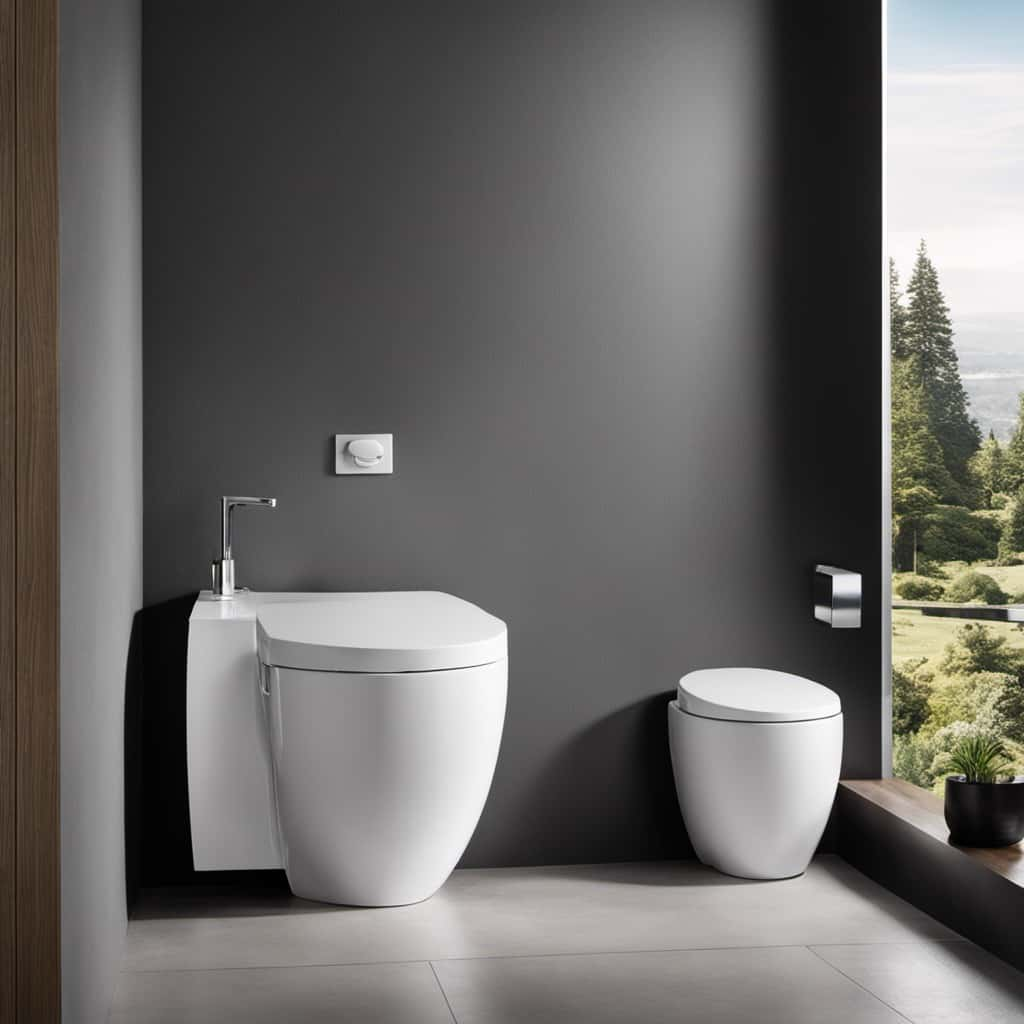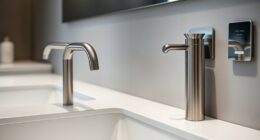We’ve investigated different mechanisms enabling us to operate toilets without the use of water. These range from toilets functioning on air pressure and vacuum systems to those that compost or utilize chemicals, offering a variety of alternatives.
In this article, we will delve into the world of dry-flush toilets. These innovative devices utilize a sealing mechanism and a waste container to eliminate the need for water.
Join us as we unravel the intricacies of this technology and discover if you can indeed flush your toilet without water.
Key Takeaways
- There are alternative flushing systems available that do not require water, such as air pressure systems, vacuum toilets, chemical toilets, and dry-flush toilets.
- Water-saving options include air pressure systems, vacuum toilets, composting toilets, and dry-flush toilets, which help conserve water.
- Some environmentally friendly options include composting toilets, vacuum toilets, chemical toilets, and dry-flush toilets, as they reduce water consumption and strain on sewage treatment facilities.
- Different types of toilets have specific applications, with air pressure systems commonly used in commercial buildings, vacuum toilets suitable for areas with limited water supply, chemical toilets ideal for temporary or mobile applications, and dry-flush toilets portable and suitable for off-grid homes, boats, or recreational vehicles.
Air Pressure Systems
While it may seem unconventional, we can actually flush our toilets without water by using air pressure systems. Pneumatic flush systems, also known as air flush systems, utilize compressed air to create a powerful burst of pressure that forces waste down the drain.
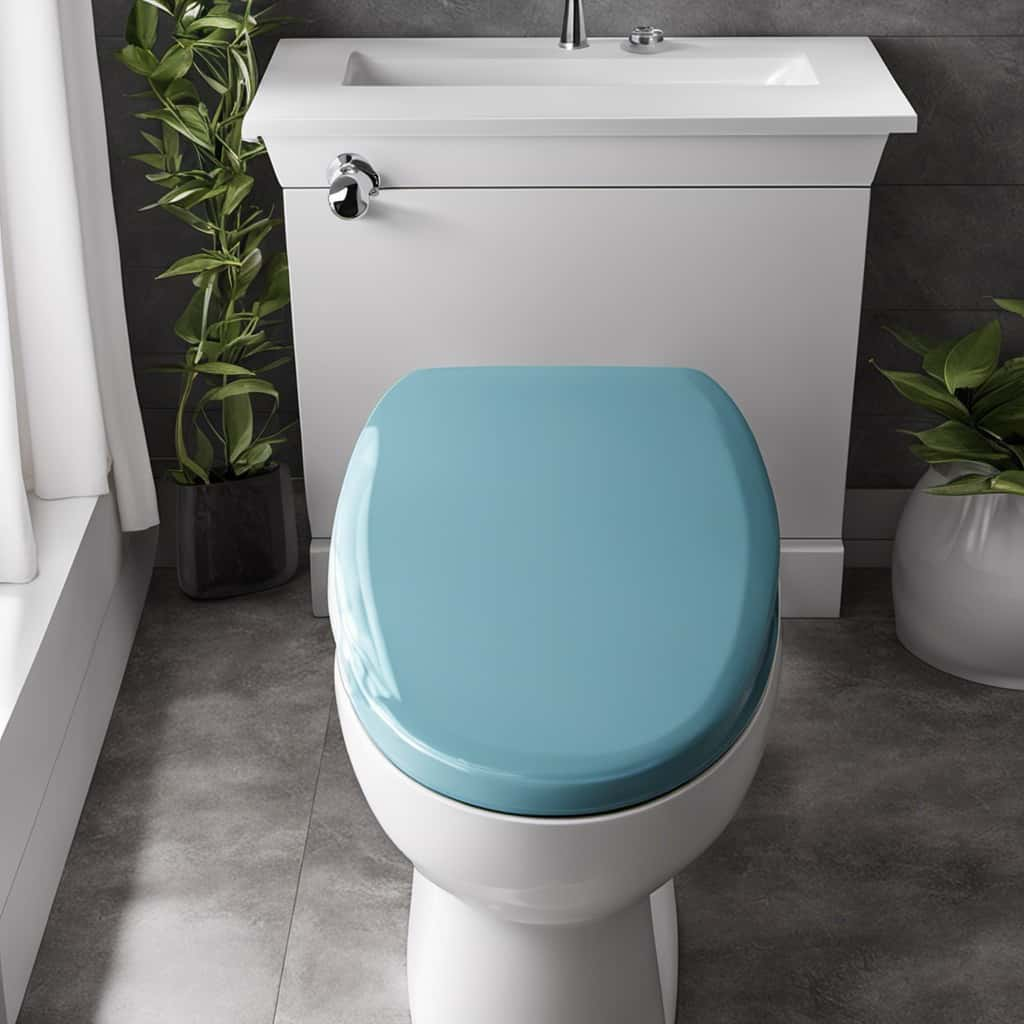
This method is commonly used in commercial buildings and public restrooms due to its efficiency and water-saving capabilities. Unlike gravity-fed flush systems, which rely on the force of gravity to flush waste away, pneumatic flush systems offer a more controlled and forceful flush.
Vacuum Toilets
Moving on from air pressure systems, let’s now explore the topic of vacuum toilets.
Vacuum toilets are a type of waterless toilet system that uses a vacuum flush to remove waste. Unlike traditional toilets that rely on water to carry waste away, vacuum toilets use a powerful suction to transport waste through a network of pipes to a central collection point. When the toilet is flushed, a vacuum is created, pulling the waste into the pipes.
This method of flushing requires significantly less water compared to conventional toilets, making vacuum toilets a more sustainable and environmentally friendly option. Additionally, since they don’t rely on water, vacuum toilets can be used in areas with limited water supply or in off-grid locations.
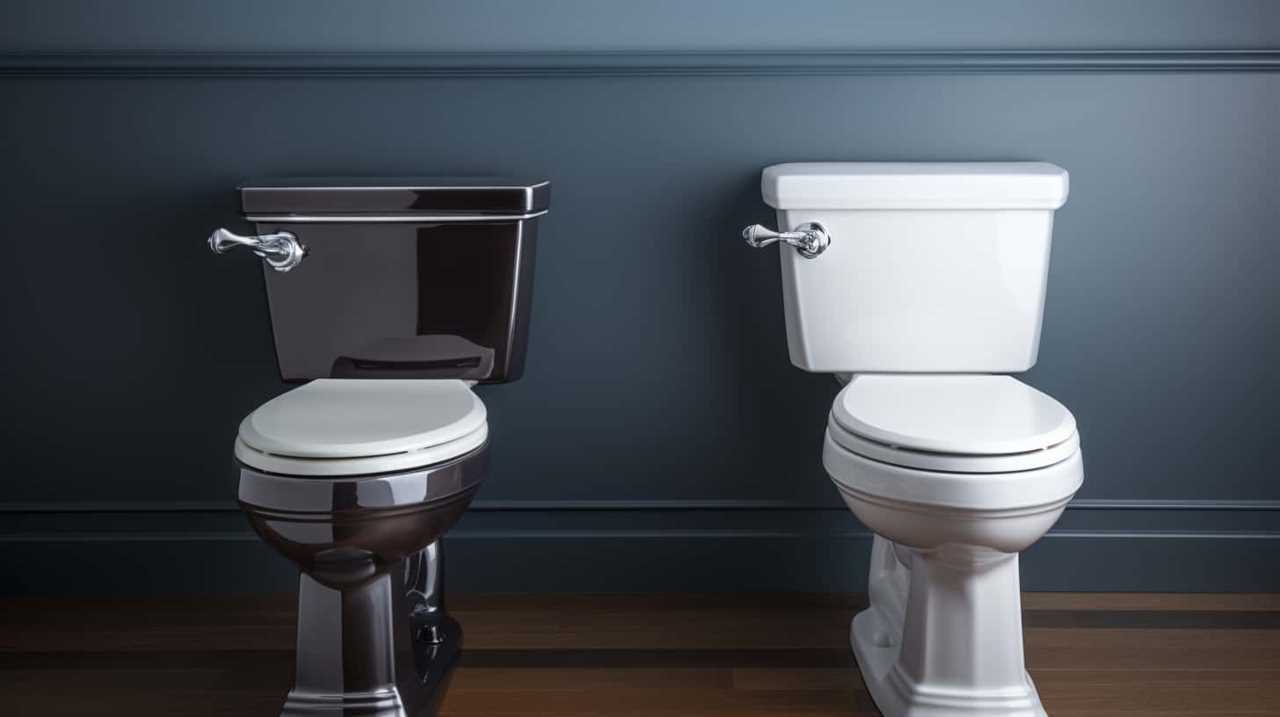
Now, let’s delve into the next section about composting toilets.
Composting Toilets
Now let’s explore the benefits of composting toilets, a sustainable and eco-friendly option that continues the discussion on alternative toilet systems. Composting toilets offer several advantages over traditional flush toilets. Firstly, they help conserve water by eliminating the need for flushing. This is particularly important in areas with water scarcity or where water conservation is a priority. Secondly, composting toilets reduce the strain on sewage treatment facilities and decrease the release of harmful pollutants into the environment. Additionally, they produce nutrient-rich compost that can be used as fertilizer for plants, promoting sustainable gardening practices.
To maintain a composting toilet, proper management is crucial. Here is a table outlining some key maintenance tasks:
| Task | Frequency |
|---|---|
| Emptying compost | Every 6-12 months |
| Adding bulking agent | After each use or weekly |
| Monitoring moisture levels | Regularly |
| Turning compost | Monthly |
Chemical Toilets
What are the benefits of using chemical toilets in comparison to composting toilets?
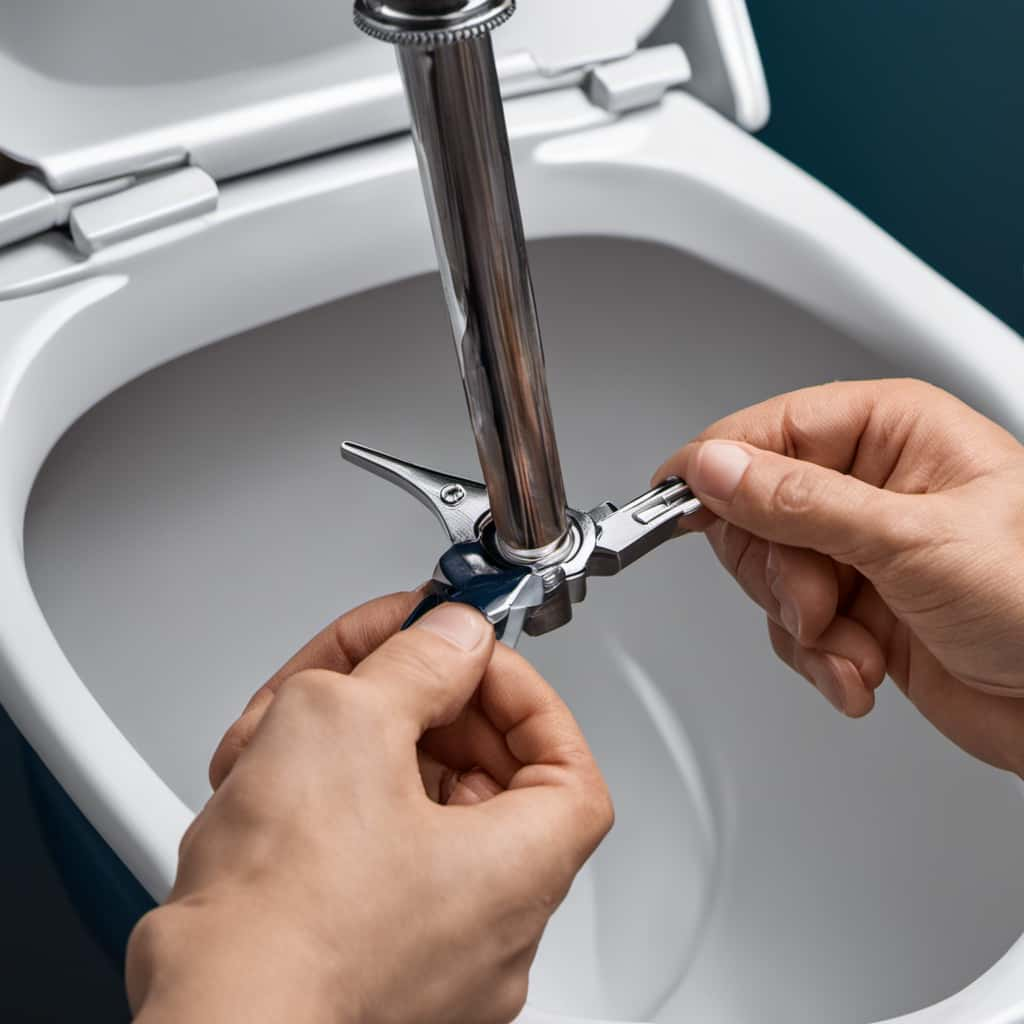
Chemical toilet alternatives offer several advantages over composting toilets. One key benefit is the ability to quickly and effectively eliminate waste without the need for water. Chemical toilets use specially formulated chemicals to break down and neutralize waste, reducing odors and preventing the growth of bacteria. This makes them ideal for temporary or mobile applications, such as construction sites, outdoor events, and recreational vehicles.
Additionally, chemical toilets are easy to maintain and require minimal effort for cleaning and disposal. They’re also more compact and lightweight compared to composting toilets, making them a convenient option for transportation.
With these benefits in mind, let’s now explore another alternative to traditional water-flush toilets: the dry-flush toilet.
Dry-Flush Toilets
While discussing dry-flush toilets, we can explore how they offer an innovative solution for flushing toilets without water. Dry-flush toilets are portable options that provide water-saving alternatives for various settings, including off-grid homes, boats, or recreational vehicles.

Dry-flush toilets operate by using a sealing mechanism to separate waste from the user and the environment. When the toilet is used, a handle is activated, causing a bag or cartridge to wrap around the waste. This action creates an airtight seal, preventing odors and bacteria from escaping. The waste is then stored in a separate compartment, ensuring cleanliness and hygiene.
One of the major advantages of dry-flush toilets is their portability. They can be easily transported and installed in different locations, making them ideal for those who frequently move or live in remote areas. Additionally, dry-flush toilets are water-saving alternatives that don’t require any plumbing or water connection. This not only reduces water consumption but also eliminates the need for complex infrastructure.
Frequently Asked Questions
How Much Water Does an Air Pressure System Flush Use Compared to a Traditional Toilet?
An air pressure system flush uses significantly less water compared to a traditional toilet. This water saving technology reduces the amount of water consumed per flush, resulting in a positive impact on overall water consumption.
Can a Vacuum Toilet Be Installed in Any Type of Building or Does It Require Specific Plumbing Infrastructure?
Yes, a vacuum toilet can be installed in any type of building, but it does require specific plumbing infrastructure. The installation process involves connecting the vacuum unit to a central collection tank and a network of vacuum pipes.
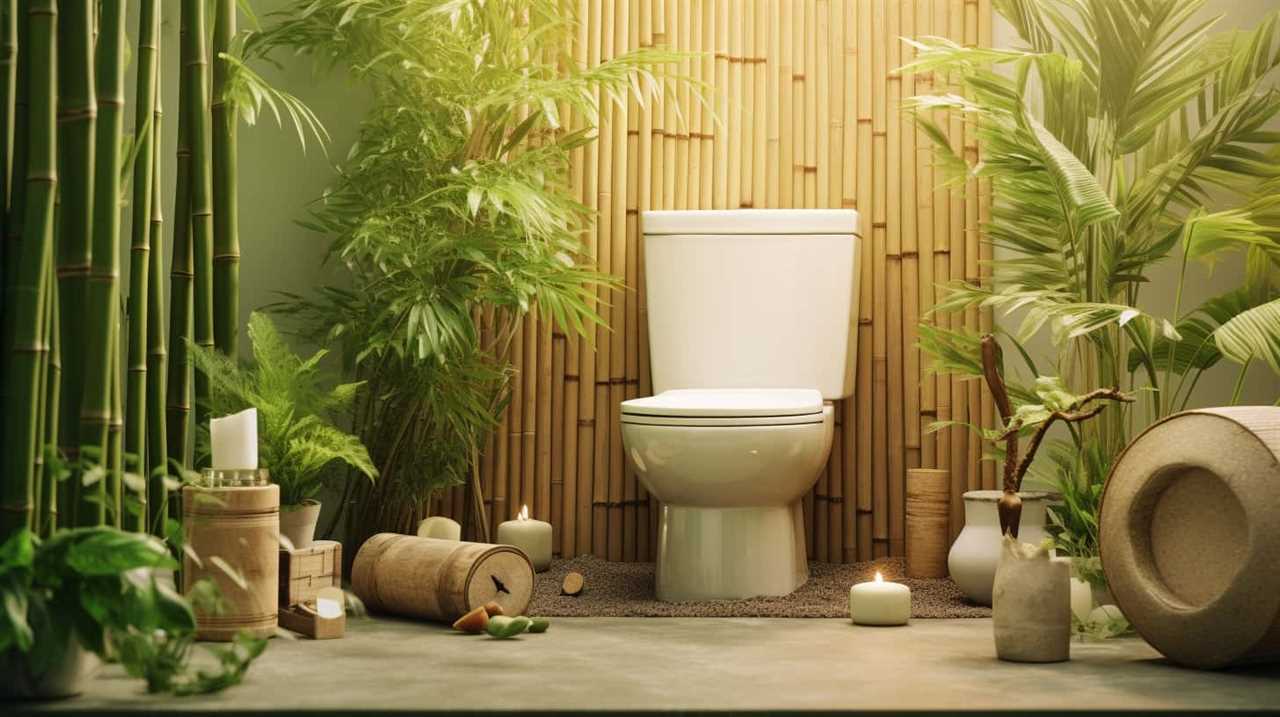
Are Composting Toilets Suitable for Use in Urban Areas or Are They More Commonly Used in Rural Areas?
Composting toilets are suitable for both urban and rural areas. While more commonly used in rural areas, urban composting toilets are becoming increasingly popular as they offer an eco-friendly and sustainable solution for waste management.
What Are the Main Differences Between Chemical Toilets and Traditional Flush Toilets in Terms of Maintenance and Odor Control?
Chemical toilets and traditional flush toilets have significant differences in maintenance and odor control. Maintenance for chemical toilets involves regular emptying and adding chemicals, while flush toilets require water for flushing and cleaning. Odor control methods also differ between the two.
How Does a Dry-Flush Toilet Work and Is It an Environmentally Friendly Option Compared to Other Toilet Systems?
Dry flush toilet technology offers a water-saving alternative to traditional flush toilets. By using a sealing mechanism, waste is contained and then disposed of in an environmentally friendly manner, making it a viable option for water conservation.
Conclusion
In conclusion, there are various alternative options available for flushing toilets without water. These include air pressure systems, vacuum toilets, composting toilets, chemical toilets, and dry-flush toilets.
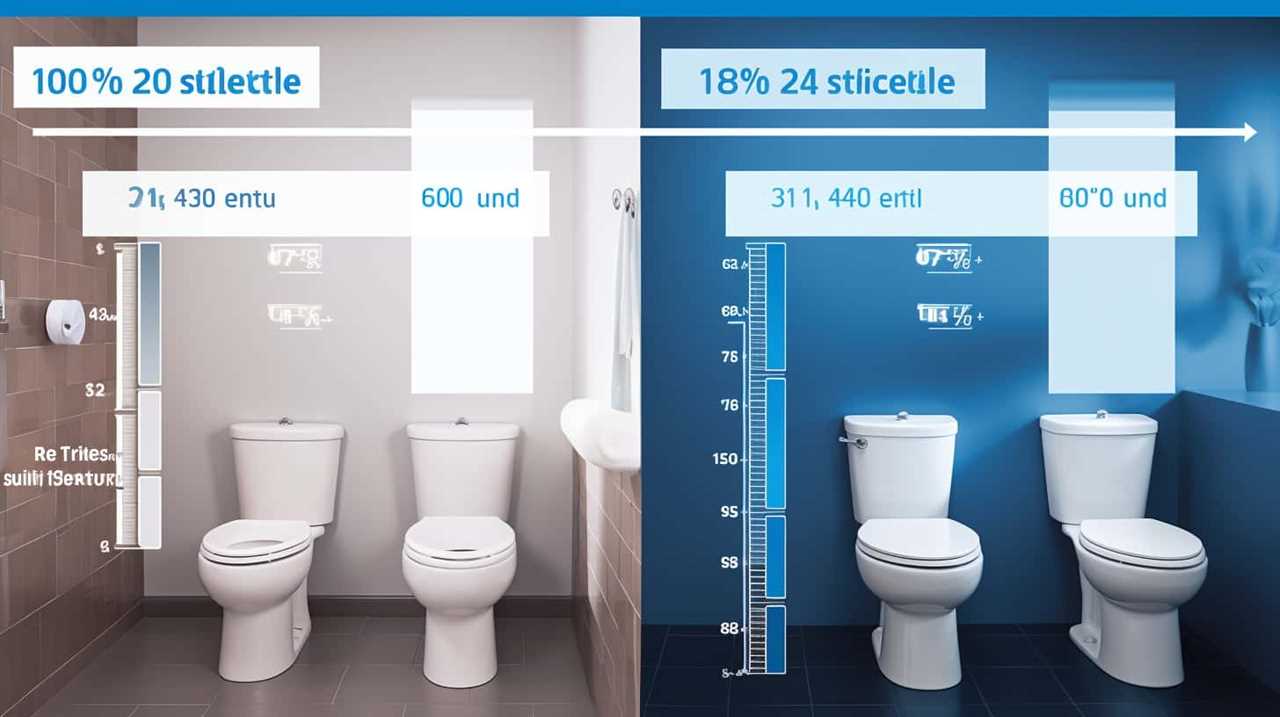
Each of these systems offers unique advantages and can be suitable for different settings and purposes.
So, next time you think of flushing, remember that there are innovative and efficient ways to do it without relying solely on water. It’s time to embrace the future and bid farewell to the traditional water-dependent flushing systems.
